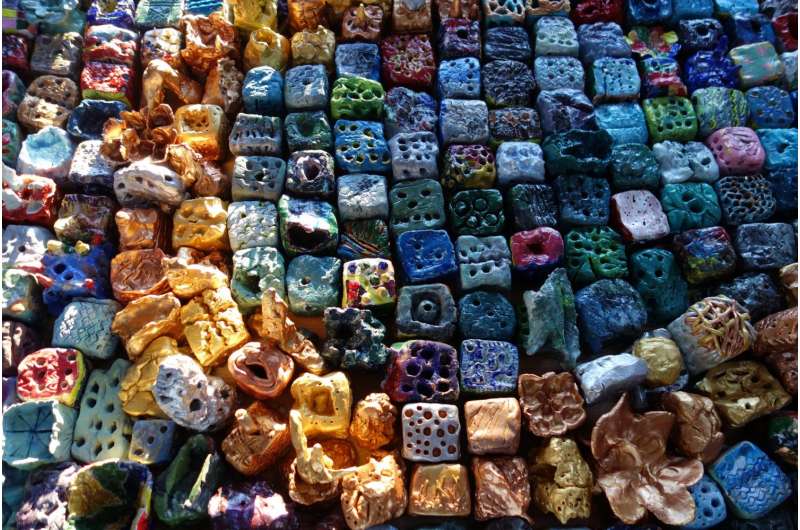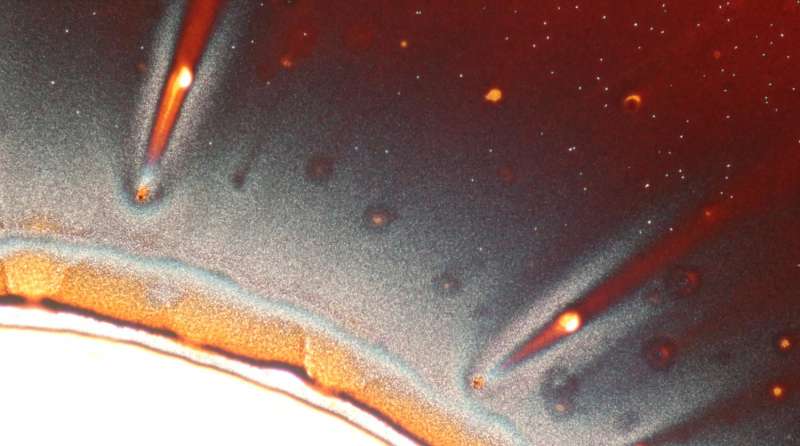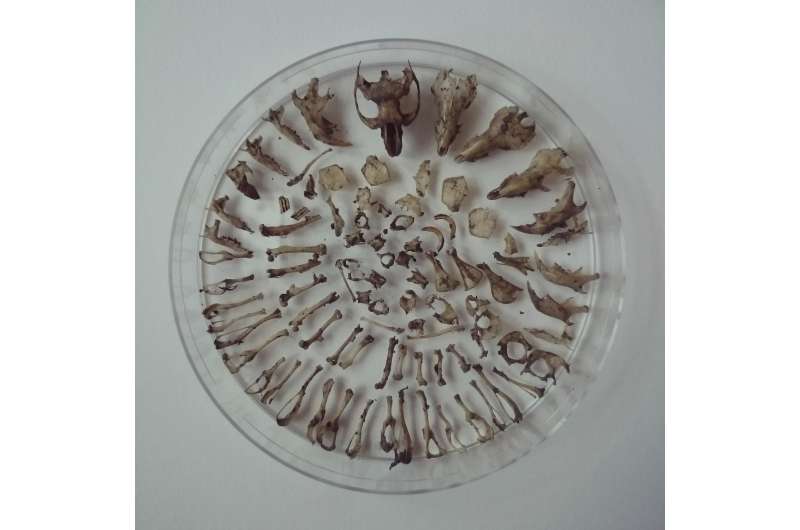Research as Art Awards 2017: Fifteen extraordinary images shed light on the beauty and diversity of research

Fifteen stunning images, and the fascinating stories behind them—such as how a barn owl's pellets reveal which animals it has eaten, how data can save lives, and how Barbie breaks free—have today been revealed as the winners of the 2017 Research as Art awards.
The overall winner is Dr Ruth Callaway, a research officer from the College of Science. Her entry, Bioblocks: building for nature, illustrates how children and researchers have been exploring ways in which the tidal lagoon proposed for Swansea Bay could become a new habitat for marine creatures.
At a workshop held by the University, over 200 children used cubes of clay to sculpt ecologically attractive habitats that could be used by sea creatures. Crevices and holes could provide shelter. Using different textures and overhangs would allow animals and seaweed to cling to the breakwater.
The workshop is one of the ways in which Swansea University researchers on the SEACAMS project have been working with Tidal Lagoon Swansea Bay Plc, to enhance the ecological value of the world's first tidal lagoon.
See and download winning images here https://www.flickr.com/gp/swanseauniversity/215x76
Research as Art is the only competition of its kind, open to researchers from all subjects, and with an emphasis on telling the research story, as well as composing a striking image.

It offers an outlet for researchers' creativity, and celebrates the diversity, beauty, and impact of research at Swansea University - a top 30 research university.
86 entries were received from researchers across all Colleges of the University, with titles such as:
- Soaring skills of a vulture
- Coffee and medication monitoring
- Still on duty? A Roman soldier in endangered Syria
A distinguished judging panel of senior figures from the Royal Institution, NewScientist, and Nature, selected a total of fifteen winners. Along with the overall winner, there were judges' awards in four categories relating to engagement—imagination, inspiration, illumination, and the natural world—and 10 highly-commended entries.
Overall winner Dr Ruth Callaway described the image in her winning entry:
"Over 200 children used cubes of clay to sculpt ecologically attractive habitats for coastal creatures. These bioblocks demonstrate that humanmade structures can support marine life, while children and their families have gained a better understanding of the unique resilience of sea creatures.

It is hoped that the diverse and complex habitat will enable more species to use this new material as a living space: crevices and holes will provide shelter; variable textures and overhangs will allow animals and seaweed to cling to the material."
Dr Ruth Callaway added: "Innovative projects such as the Tidal Lagoon Swansea Bay are inspiring, but they also throw up lots of questions and complex environmental challenges.
For marine scientists, the project creates unprecedented research opportunities to explore how the construction process could reduce negative impact on the coastal environment.
The EU-funded SEACAMS project and the company Tidal Lagoon Power work in collaboration, and we explore novel ways of enhancing biodiversity. Discussing these ideas with the public both informs the wider community about our work and triggers new research ideas."
Provided by Swansea University





















